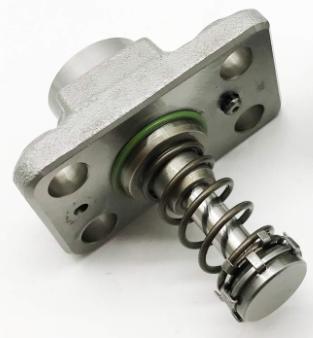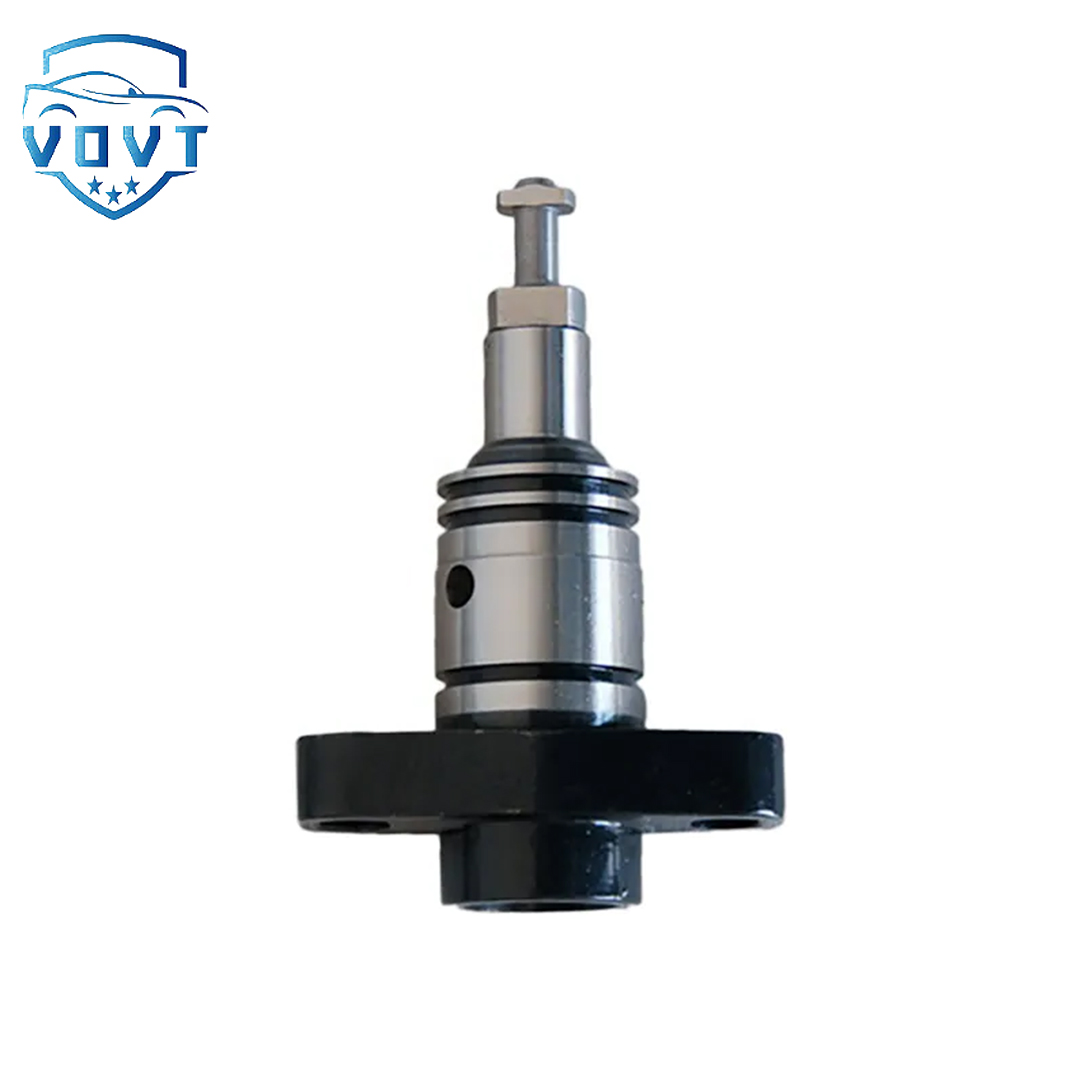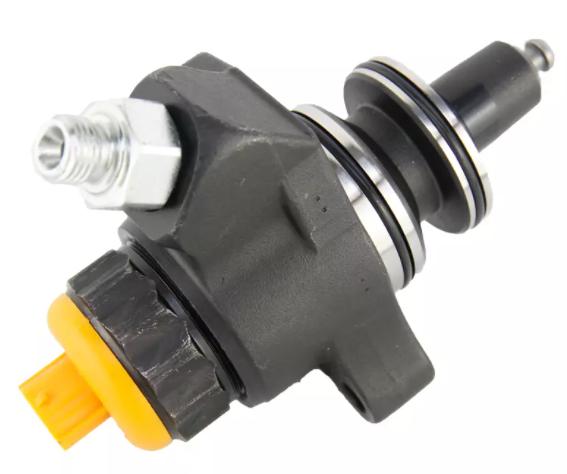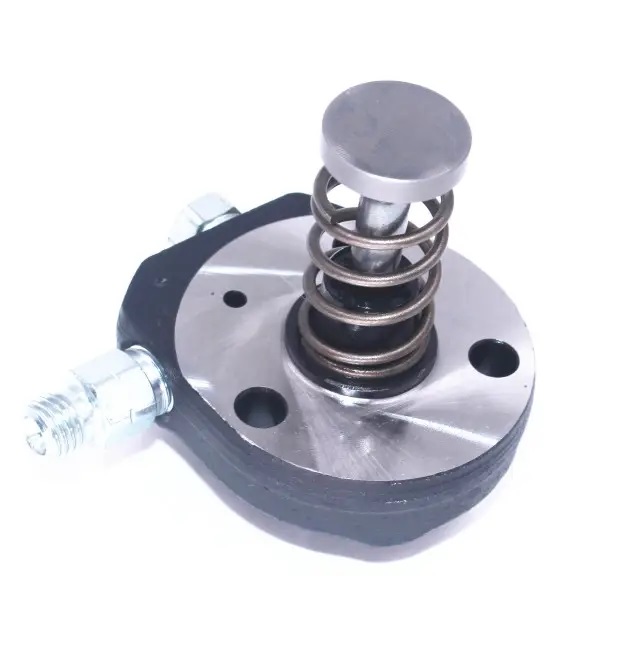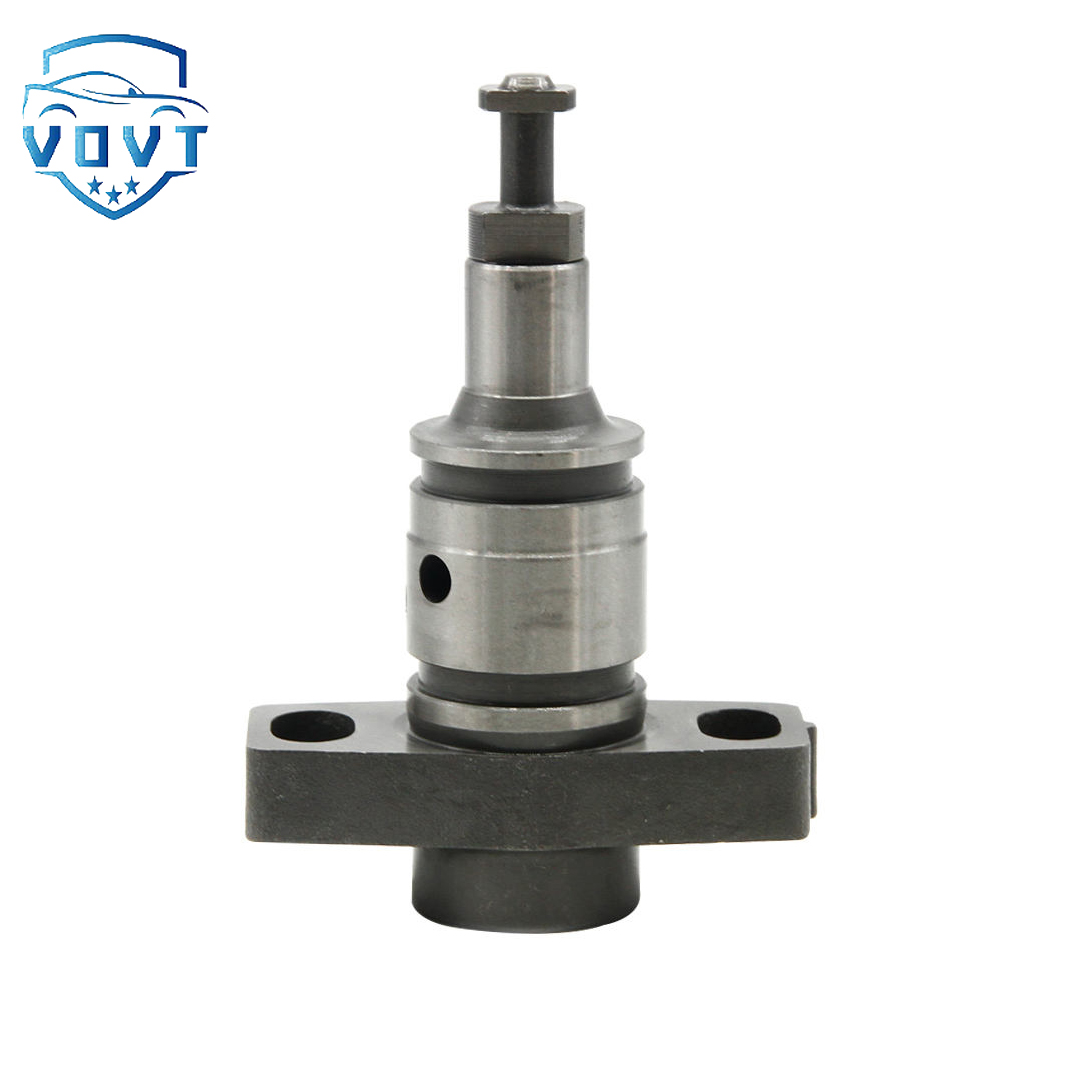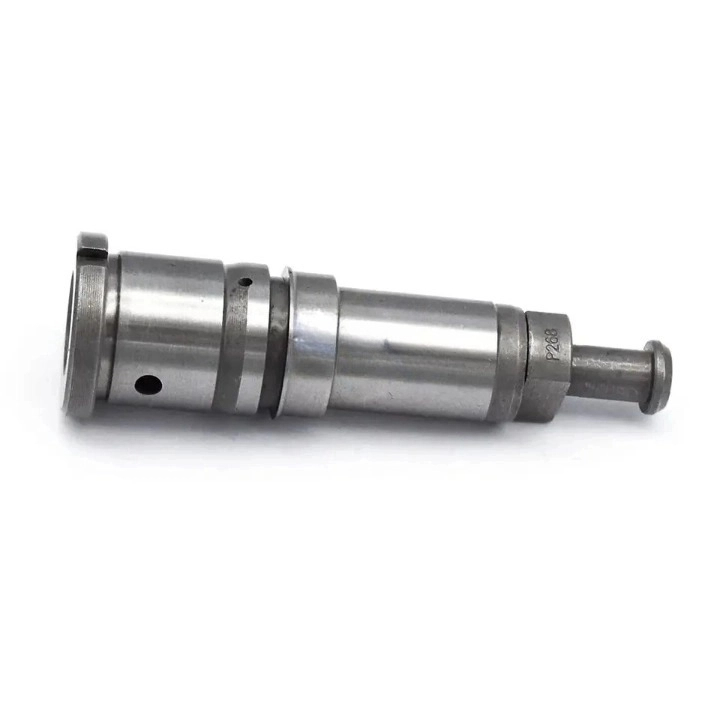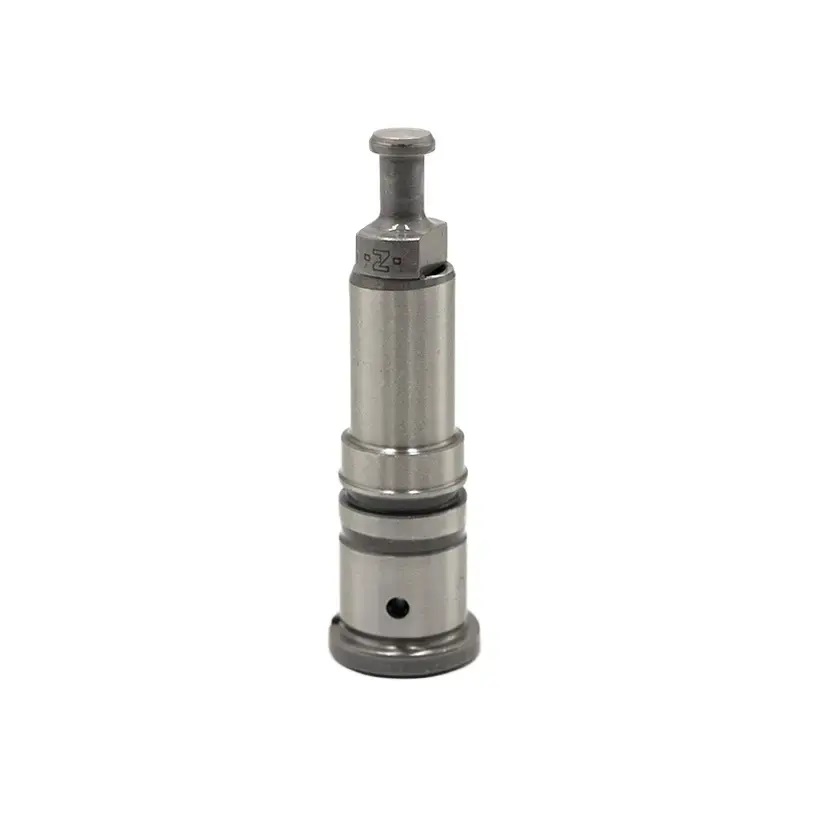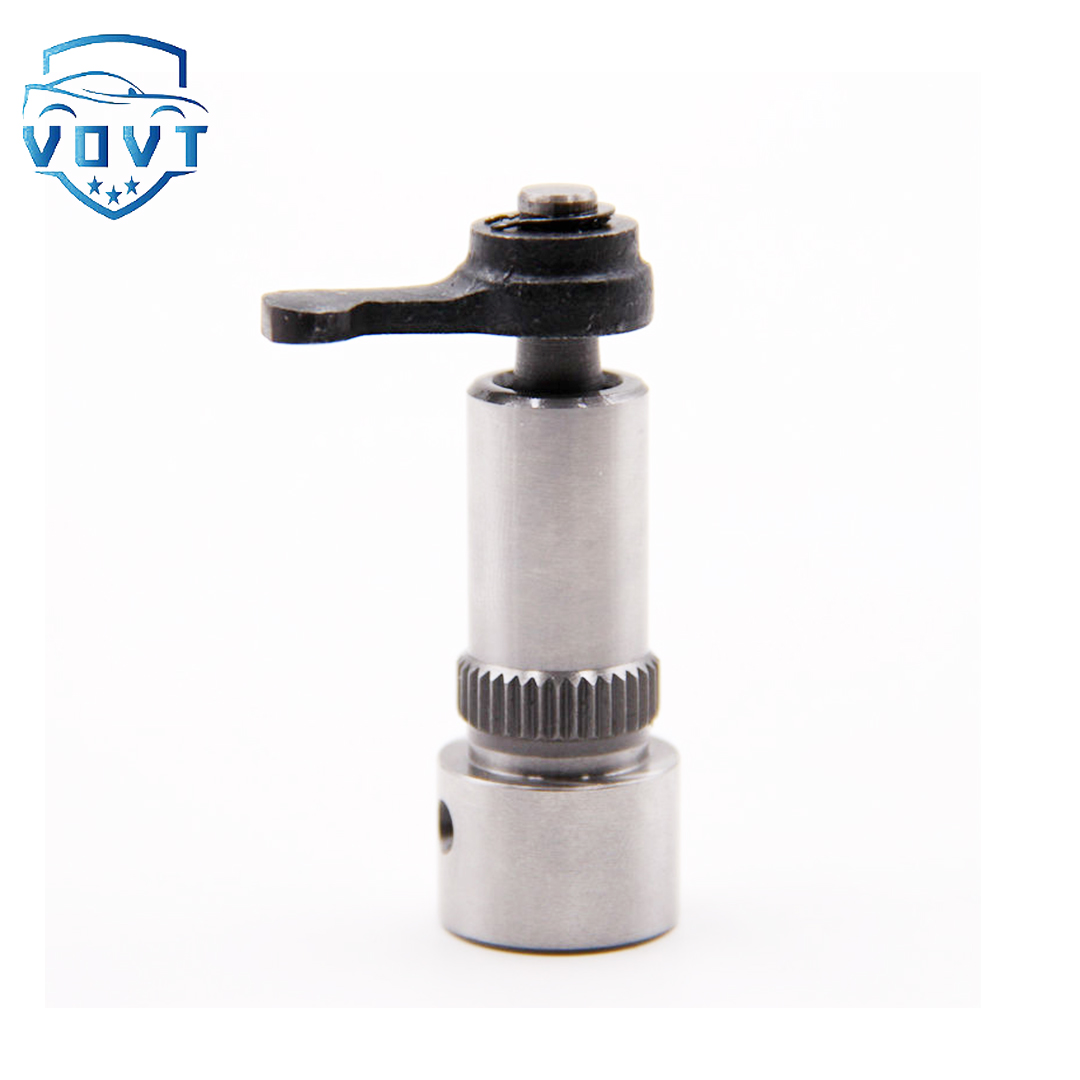Made in China Fuel Injection Pump Plunger 22100-0L060 Pump Elements Engine Accessories
products description
| Reference. Codes | 22100-0L060 |
| OE/OEM Codes | / |
| Application | / |
| MOQ | 5 PCS |
| Certification | ISO9001 |
| Place of Origin | China |
| Packaging | Neutral packing |
| Quality Control | 100% tested before shipment |
| Lead time | 7~15 working days |
| Payment | T/T, Paypal, Western Union or as your requirement |
Research on key technologies, applications and development trends of oil pump plungers
I. Introduction
In modern industrial systems, the oil pump plunger, with its unique operating mode, enables efficient fluid delivery and precise metering, becoming crucial for the stable operation of various oil pumping equipment. From large hydraulic systems to precision fuel injection devices, the performance of the oil pump plunger directly impacts the efficiency, stability, and reliability of the equipment. With the continuous improvement of equipment performance requirements across various industries, and the drive towards energy conservation, emission reduction, and intelligent development, in-depth research on the technology and application of oil pump plungers is crucial for promoting efficient, green, and intelligent industrial production.
II. Working Principle and Structural Types of Oil Pump Plunger
2.1 Working Principle
The oil pump plunger primarily achieves its pumping function through reciprocating linear motion. For example, in a typical plunger pump, when the plunger moves outward, the pump chamber volume increases, the pressure decreases, and fluid flows into the pump chamber under the influence of external atmospheric pressure or other pressure sources, completing the oil suction process. When the plunger moves inward, the pump chamber volume decreases, the fluid is compressed, the pressure increases, and the fluid is squeezed out of the pump chamber, completing the oil pressure process. During this process, factors such as the piston's motion pattern, stroke length, and seal with the pump chamber jointly determine the pump's flow rate, pressure, and operating efficiency.
2.2 Structural Types
2.2.1 Classification by Piston Movement Direction
Axial piston: Widely used in axial piston pumps, the piston axis is parallel to the pump shaft axis. During operation, multiple pistons are evenly distributed along the circumference of the cylinder. As the cylinder rotates, the pistons are driven by the swash plate or cam to perform reciprocating linear motion. For example, in the hydraulic system of construction machinery, the axial piston of an axial piston pump interacts with the swash plate to achieve high-pressure oil output, providing power for various equipment operations. Its advantages include compact structure, easy flow adjustment, and high pressure, making it suitable for high-pressure, high-power applications.
Radial piston: Used in radial piston pumps, the piston axis is perpendicular to the pump shaft axis. A radial piston pump typically consists of a rotor, stator, piston, and a distribution shaft. As the rotor rotates, the piston, driven by centrifugal force or other external forces, reciprocates within the rotor's radial bore, simultaneously pumping and releasing oil through the distribution shaft. In specialized industrial equipment, such as metering pumps in the petrochemical industry, the radial piston of a radial piston pump precisely controls fluid delivery, meeting the stringent flow accuracy requirements of production processes. While characterized by excellent sealing and the ability to withstand high pressures, it also exhibits a relatively complex structure and bulky size.
2.2.2 Classification by Piston Structure
Solid pistons: These are solid pistons with high strength and rigidity, capable of withstanding significant pressures and loads. In equipment such as large hydraulic presses, solid pistons are often used to transmit significant pressure and achieve workpiece processing. However, solid pistons are relatively heavy, and during high-speed reciprocating motion, they generate significant inertial forces, which can increase energy consumption and place higher demands on the drive system.
Hollow pistons: To reduce weight and inertia, some pistons are hollow in design. While maintaining a certain level of strength, hollow plungers can effectively improve equipment speed and response efficiency. They are commonly used in oil pump systems with high speed requirements, such as certain high-speed hydraulic pumps. Furthermore, the hollow structure can be used to house cooling channels or other functional components, further enhancing plunger performance. For example, in oil pumps operating in high-temperature environments, passing coolant through the hollow plunger can effectively reduce plunger temperature and improve operational stability.
Combined plungers: These are composed of multiple components, such as the plunger rod and plunger head, which are manufactured from different materials and then assembled together. This structure leverages the advantages of different materials: the plunger rod is made of high-strength material to ensure load-bearing capacity, while the plunger head is made of wear- and corrosion-resistant materials to enhance service life and sealing performance. Combination plungers are widely used in mud pumps used in oil production. The plunger head, which comes into contact with corrosive and abrasive media such as mud, is manufactured from a special alloy material that effectively resists wear and corrosion, extending the plunger's service life and ensuring stable operation under harsh operating conditions.
III. Key Technologies for Oil Pump Plunger
3.1 Material Selection and Performance Requirements
3.1.1 High-Strength and Wear-Resistant Materials
Oil pump plungers are subjected to high-pressure, high-velocity friction and impact during operation, requiring materials with high strength and excellent wear resistance. In the hydraulic plunger industry, commonly used materials include alloy steels such as 40Cr and 35CrMo. After heat treatment processes such as quenching and tempering, they achieve high hardness and strength, with surface hardness reaching HRC40-50, effectively resisting wear. In fuel injection plungers, due to their more demanding operating environment, specialized alloys such as alloy steels containing elements such as tungsten and molybdenum are often used. These alloys offer higher hardness and improved wear resistance, meeting the requirements of long-term operation under high-pressure fuel flow. For example, in diesel engine high-pressure fuel pumps, the wear resistance of the plunger material directly impacts its service life and injection accuracy. Plungers manufactured from high-performance alloys can significantly extend the pump's maintenance cycle while maintaining injection accuracy. 3.1.2 Corrosion-Resistant Materials
In specialized applications, such as chemical and marine engineering, oil pump plungers come into contact with corrosive media, making corrosion resistance a key factor in material selection. For example, plunger pumps in seawater desalination systems are typically manufactured from corrosion-resistant materials such as stainless steel (such as 316L) or titanium alloys. 316L stainless steel contains molybdenum, enhancing its resistance to chloride ion corrosion; titanium alloys offer excellent corrosion resistance, maintaining stable performance in harsh chemical environments and preventing corrosion-induced plunger damage and leakage. In chemical production, using corrosion-resistant materials for oil pump plungers transporting corrosive liquids ensures process continuity and safety, avoiding production accidents and environmental pollution caused by plunger corrosion.
3.2 Manufacturing Process and Precision Control
3.2.1 Precision Machining
The manufacturing precision of oil pump plungers directly impacts their performance, especially in applications requiring extremely high flow and pressure control accuracy. To achieve high-precision machining, precision machining processes such as CNC grinding and honing are often employed. CNC grinding precisely controls the plunger's outer diameter, achieving dimensional accuracy of ±0.001mm and surface roughness of Ra0.05-0.1μm, ensuring a precise fit between the plunger and the sleeve. Honing further enhances the plunger's surface smoothness and cylindricity. The honed surface exhibits a microscopic cross-grained structure, which facilitates lubricant storage, reduces friction, and improves sealing performance. For example, in aircraft engine fuel injection systems, the manufacturing precision of the oil pump plunger is extremely high. Ultra-precision machining ensures accurate and stable fuel injection, thereby enhancing engine performance and reliability.
3.2.2 Surface Treatment Technology
Surface treatment technology is crucial to improving the wear resistance, corrosion resistance, and fatigue resistance of oil pump plungers. Common surface treatment methods include chrome plating, nitriding, and PVD (physical vapor deposition) coating. Chrome plating offers high hardness, excellent wear resistance, and excellent chemical stability, significantly improving the hardness and corrosion resistance of the plunger surface. Chrome plating thickness typically ranges from 0.02 to 0.05mm. Nitriding treatment forms an extremely hard nitride layer on the plunger surface, enhancing surface hardness and fatigue strength. The depth of the nitride layer typically ranges from 0.1 to 0.5mm. PVD coating deposits a nanoscale hard film, such as TiN (titanium nitride) or TiAlN (titanium aluminum nitride), on the plunger surface. These coatings offer high hardness, low friction, and excellent chemical stability, effectively enhancing the plunger's overall performance. Applying PVD coating technology to fuel pump plungers in automotive engines reduces friction between the plunger and the plunger sleeve, minimizing energy loss, improving engine fuel efficiency, and extending the plunger's service life.
IV. Typical Application Examples of Oil Pump Plungers in Oil Pumps
4.1 Applications of Plunger in Axial Piston Pumps
4.1.1 Axial Piston Pumps for Construction Machinery
In the field of construction machinery, axial piston pumps are the core power components of hydraulic systems, and the performance of their pistons directly impacts the efficiency and reliability of the equipment. For example, the axial piston pump used in a certain model of excavator is manufactured from high-strength alloy steel, precision machined, and surface nitrided. During operation, multiple pistons are evenly distributed along the circumference of the cylinder. As the cylinder rotates, the pistons, driven by the swash plate, perform reciprocating linear motion, achieving oil suction and compression. Under rated pressure of 35 MPa and a rotational speed of 1800 rpm, this axial piston pump delivers a stable output flow rate and a volumetric efficiency exceeding 92%. However, during long-term high-load operation, the friction pairs between the pistons, the sliding shoes, the cylinder block, and other components are susceptible to wear, resulting in increased leakage and a decrease in volumetric efficiency. To address this issue, by optimizing the plunger surface treatment process and employing PVD coating technology, the friction coefficient was reduced, wear resistance was improved, and the pump's service life was extended by approximately 30%. Furthermore, improvements to the plunger's structural design, such as optimizing the shape of the plunger head, reduced resistance during plunger movement, further improving pump efficiency.
4.1.2 Axial Piston Pumps for Aerospace
The aerospace industry places extremely stringent performance requirements on axial piston pumps. The pump's plunger must possess high reliability, high precision, and lightweight characteristics. The plunger of an axial piston pump in the hydraulic system of a certain aircraft is manufactured from titanium alloy, offering high strength and low density. This effectively reduces the pump's weight and improves the aircraft's fuel economy and flight performance. Ultra-precision machining is employed in the manufacturing process to ensure the plunger's dimensional accuracy and surface quality, meeting the high-precision requirements of the aerospace industry. This axial piston pump operates stably under high pressure and high speed conditions during flight, providing reliable hydraulic power for the aircraft's flight control, landing gear retraction, and other systems. However, due to the complexity of the aerospace environment, plungers face challenges from extreme conditions such as high temperature, high pressure, and high vibration. Advanced cooling and lubrication technologies, such as internal cooling channels and special lubricants, are required to ensure proper operation in these harsh environments.
4.2 Applications of Plunger Pumps in Radial Piston Pumps
4.2.1 Radial Piston Pumps for Petrochemical Industry
In the petrochemical industry, radial piston pumps are commonly used to transport high-viscosity, high-pressure media such as crude oil and chemical raw materials. A refinery's crude oil pump utilizes a radial piston pump. Its plunger is made of a special alloy material with excellent wear and corrosion resistance, making it resilient to impurities and corrosive components in crude oil. During operation, the rotor rotates, driving the plunger in reciprocating motion within the radial bore, achieving oil suction and pressure via the distribution shaft. This radial piston pump operates stably at a pressure of 10 MPa when transporting crude oil with a viscosity of 500 mPa·s. Its wide flow adjustment range meets the refinery's crude oil transportation needs under diverse production conditions. However, due to the high viscosity of crude oil, the plunger experiences significant friction during movement, which can lead to increased wear. To address this, the piston's return resistance was reduced by optimizing the structure of the distribution shaft. Furthermore, a highly efficient lubrication system was implemented to reduce the friction coefficient between the plunger and the bore wall, effectively extending the plunger's service life.
4.2.2 Radial Piston Pumps for Precision Metering
In industries such as pharmaceuticals and food, where fluid metering accuracy is extremely high, radial piston pumps are widely used due to their high-precision flow control capabilities. A pharmaceutical factory's liquid drug metering pump utilizes a radial piston pump. Its precision-ground plunger creates an extremely tight fit with the plunger sleeve, ensuring precise flow control. By adjusting the plunger's stroke and movement frequency, the liquid drug flow rate can be precisely adjusted, with minimal error. During production, this radial piston pump consistently delivers the prescribed dosage of liquid drug to the reactor or packaging equipment, ensuring consistent and stable drug quality. To further improve metering accuracy, an advanced electronic control system is employed. This system monitors the plunger's motion in real time and automatically adjusts its stroke and speed based on feedback signals, achieving closed-loop flow control and meeting the pharmaceutical industry's stringent requirements for high-precision metering.
4.3 Plunger Applications in Fuel Injection Pumps
4.3.1 Diesel Engine High-Pressure Fuel Pumps
The high-pressure fuel pump in a diesel engine is a key component of the fuel injection system. The performance of the pump plunger directly impacts the engine's combustion efficiency and emissions. For example, the high-pressure fuel pump in a heavy-duty truck diesel engine utilizes a high-precision grinding process to create a clearance between the plunger and the plunger sleeve, achieving a clearance of 3-5μm. During engine operation, the plunger, driven by the camshaft, draws fuel from the low-pressure fuel chamber into the high-pressure fuel chamber. After multiple compressions, the fuel reaches a pressure of 180-200 MPa before being sprayed into the combustion chamber through the fuel injector nozzle in atomized form. This precise fuel injection control significantly improves engine combustion efficiency, reduces fuel consumption by approximately 10%, and significantly reduces harmful exhaust pollutants (such as nitrogen oxides and particulate matter). However, with increasingly stringent engine emission standards, the demand for plunger precision and reliability is even higher. Further optimization of the plunger assembly manufacturing process is needed to improve its wear resistance and sealing properties to ensure the stability of fuel injection volume and injection pressure over long-term operation. Using new materials for the plunger and plunger sleeve, such as ceramic-coated plungers, can improve their surface hardness and wear resistance, reducing wear-induced leakage and thus ensuring stable performance of the high-pressure fuel pump.
4.3.2 Gasoline Engine Direct Injection System Fuel Pump
Gasoline engine direct injection systems require extremely high fuel injection precision and responsiveness, and the fuel pump plunger plays a crucial role in this process. In the direct injection system of a certain high-performance gasoline engine, the fuel pump plunger is manufactured from a lightweight, high-strength alloy to improve responsiveness. When the engine is running at high speed, the plunger can complete the fuel intake, compression, and injection process in a very short time, achieving precise control of the fuel injection quantity and injection time, and improving the engine's power performance and fuel economy. In actual application, by optimizing the plunger's motion curve and control strategy, the engine can maintain good performance under different operating conditions. For example, under rapid acceleration, the engine's power output responds quickly and torque is significantly improved; under idling conditions, the fuel injection quantity is precisely controlled, and the engine runs smoothly with minimal vibration. To meet the future engine's demand for higher fuel injection pressure and more precise control, the oil pump plunger of the gasoline engine direct injection system will develop towards smaller size, higher precision, and faster response speed, while also needing to further improve its reliability and durability.




















